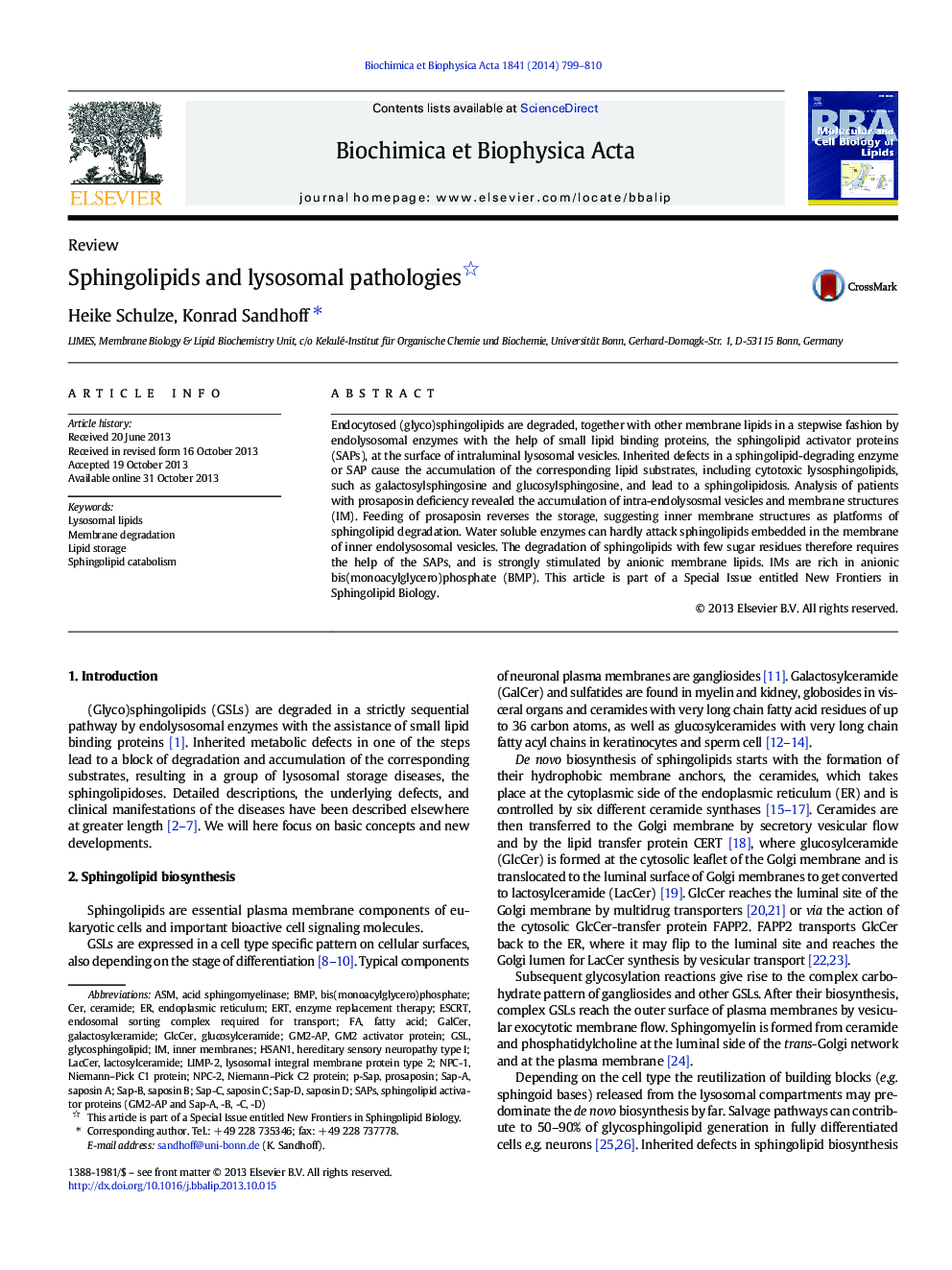| Article ID | Journal | Published Year | Pages | File Type |
|---|---|---|---|---|
| 1949235 | Biochimica et Biophysica Acta (BBA) - Molecular and Cell Biology of Lipids | 2014 | 12 Pages |
•(Glyco)sphingolipids are degraded by enzymes with the help of activator proteins.•The activator proteins are small lipid binding proteins.•Sites of lipid degradation are luminal endolysosomal membrane structures.•Sphingolipid hydrolysis requires the presence of anionic lipids, such as BMP.•Deficiency of a degrading enzyme or lipid binding protein causes a sphingolipidosis.
Endocytosed (glyco)sphingolipids are degraded, together with other membrane lipids in a stepwise fashion by endolysosomal enzymes with the help of small lipid binding proteins, the sphingolipid activator proteins (SAPs), at the surface of intraluminal lysosomal vesicles. Inherited defects in a sphingolipid-degrading enzyme or SAP cause the accumulation of the corresponding lipid substrates, including cytotoxic lysosphingolipids, such as galactosylsphingosine and glucosylsphingosine, and lead to a sphingolipidosis. Analysis of patients with prosaposin deficiency revealed the accumulation of intra-endolysosmal vesicles and membrane structures (IM). Feeding of prosaposin reverses the storage, suggesting inner membrane structures as platforms of sphingolipid degradation. Water soluble enzymes can hardly attack sphingolipids embedded in the membrane of inner endolysosomal vesicles. The degradation of sphingolipids with few sugar residues therefore requires the help of the SAPs, and is strongly stimulated by anionic membrane lipids. IMs are rich in anionic bis(monoacylglycero)phosphate (BMP). This article is part of a Special Issue entitled New Frontiers in Sphingolipid Biology.
